ARGOMENTI DI ARCHITETTURA ISSN 1591-3171 N. 3/2022
ABETI Maurizio, KAHN Meryl
Abstract
To make students learn and understand the development background and main content of modern architecture history from a broader and more macroscopic view, the article puts forward some exploration and suggestions about teaching modern architecture history. The teaching should strengthen the relationships between social background, artist history and ancient architectural history, and pay attention to the combination of history teaching with theory teaching. Meanwhile, teachers should study the case to strengthen the students’ analysis ability. Through these teaching explorations, students can consciously and gradually establish their own architectural views.
1. Introduction
The history of modern architecture is one of the main academic courses in architecture, and it is an almost compulsory course for architecture students. Compared with ancient architectural history, this didactic course has the characteristics of non-trivial points of knowledge, various theoretical schools and a large amount of information. With the increase in graphic materials and the transmission of network information, students can learn more and more directly about the latest architectural developments in foreign countries. Their sensitivity and acceptance of new architectural trends surpass that of some teachers. However, most students’ understanding of this information is relatively fragmented and pictorial, and they lack a necessary and systematic understanding of some architectural phenomena or trends of thought. These images and knowledge are in a disordered state in students’ minds, which eventually lead to Their development of modern architecture are only at the level of images or genres, and they lack the necessary understanding of the relevant background and internal logic, let alone establish their own architectural views [1]. In the past ten years, with the in-depth study of architectural history by domestic scholars and the publication of original and translated works in foreign languages, we have gradually come to know and come into contact with more historians and theorists in their understanding of architecture. The improvement of students’ quality and the development of historical research have put forward higher requirements for teachers. In the teaching of architectural history, firstly, students should not only clarify architectural concepts, and understand architectural phenomena and backgrounds, but also expand relevant knowledge of social and humanities, so that students can observe architectural phenomena from a broader and macro perspective. Case analysis of architects or architectural works, introducing the analytical methods of architectural theorists, to strengthen the cultivation of student’s analytical ability; finally, through the study of the views of architectural masters, guide students to establish a sense of mission and social responsibility, and gradually consciously establish own architectural point of view.
1. Interaction with the social context
Modern development is closely related to the great changes in their social background, and the division of “modern” is also based on the British Industrial Revolution as the dividing point. The Industrial Revolution not only made Britain a powerhouse of capitalist development, but also changed the face of the entire European city, but also brought about the great development of new materials, new structures, and new equipment. The Industrial Revolution provided a solid technical foundation for the development of modern architecture. At the same time, the Enlightenment Movement in Europe in the 18th century brought ideological enlightenment and change to modern architecture. Under the influence of the “re-rationality” thought of the Enlightenment, functional rationalism and structural rationalism appeared in the field of European architecture in the 19th century. From Mare-Antoine Laugier, which Sir John Newenham Summerson (was one of the leading British architectural historians of the 20th century) [2] affirmed: «Marc-Antoine Laugier can perhaps be called the first modern architectural philosopher»; to Eugène Emmanuel Viollet-le-Duc (Figures 1 e 2) Augustus Welby Northmore Pugin, (Figures 3 e 4) and Auguste Choisy (french architectural historian), their architectural ideas became classic modern The forerunners of functional rationalism and structural rationalism in architectural thought.

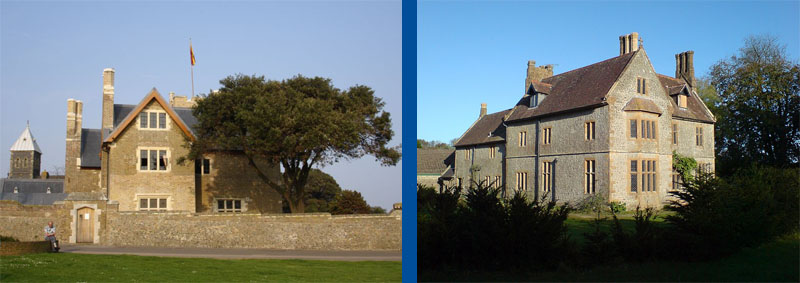
In the teaching process, consciously emphasize the impact of changes in the social background on architecture and use this to explain the reasons and dynamics of the development and evolution of modern architecture, so that students can break the shackles of simple architectural phenomena and examine architecture from a broader perspective of development.
2. The link with the history of art
Traditional foreign architectural history teaching emphasizes the speciality of architectural history itself, aiming to discover the objective laws of architectural history. In fact, foreign architectural history teaching should pay more attention to its connection with art history and enhance students’ humanistic knowledge. In fact, in the history of Western architecture, architecture has been inseparable from art from the very beginning. They originally attributed the three arts of architecture, painting and sculpture to the “art of beauty”. This view was formed in Vitruvius’s “Ten Books of Architecture”(Roman architect and writer, active in the second half of the 1st century BC, considered the most famous architectural theorist of all time), and was later affirmed and passed down by Renaissance theorists. During the Renaissance, the three arts of architecture, sculpture and painting formed a three-in-one plastic art concept [3]. While modern architecture is an integral part of the entire modern art movement, the innovation of modern architecture is inextricably linked to the revolution in painting, sculpture and decorative arts in the late 19th and early 20th centuries. The German Bauhaus School, established in the late 1920s, employed pioneer artists such as Kandinsky (Vasily Vasil’evič Kandinsky was a Russian painter, naturalized French, also Germanized as Wassily Kandinsky, forerunner and founder of abstract painting) (Figure 5) and the Hungarian painter and photographer, naturalized American and exponent of the Bauhaus, László Moholy-Nagy, who was all-powerful in the fields of Western painting, sculpture and craft design at that time. Their ideas had an important influence on the early theories of the Bauhaus. The basic courses they offered also made a great contribution to Bauhaus design education. In addition, Le Corbusier is also a good example, he himself did not receive formal architectural education, he studied fine arts from the age of 13 when he began to attend the school of Arts Décoratifs in La Chaux-de-Fonds, where he studied the art of enamelling and engraving of clocks, following in his father’s footsteps; and in his later architectural career, he has always insisted on painting creation, and used it as an architectural inspiration [4].
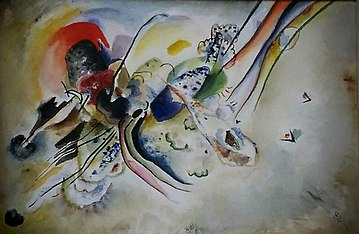
3. The link with the history of ancient architecture
Compared with the ancient architecture before the end of the 19th century, the students are more interested in the changeable, novel and innovative modern architecture. However, in the teaching of modern architectural history, it must not be isolated from ancient architectural history, and there is a clear and complex connection between the two at some levels. For example, many students are often shocked by “architecture on paper” during the French Enlightenment. In fact, many buildings were heavily influenced by the engravings of Giovanni Battista Piranesi, also called Giambattista, an 18th-century Italian architectural theorist. Piranesi’s depiction and re-creation of the ruins of ancient Roman buildings had a huge impact on the creative thinking of architects such as the Scottish architect Robert Adam (Figures 6 -7), considered one of the most sensitive interpreters of neoclassicism, in architecture in Rome in 1755-57 (to which Piranesi dedicated the Campo Marzio of ancient Rome in 1762), and the British architect William Chambers (Figure 8).
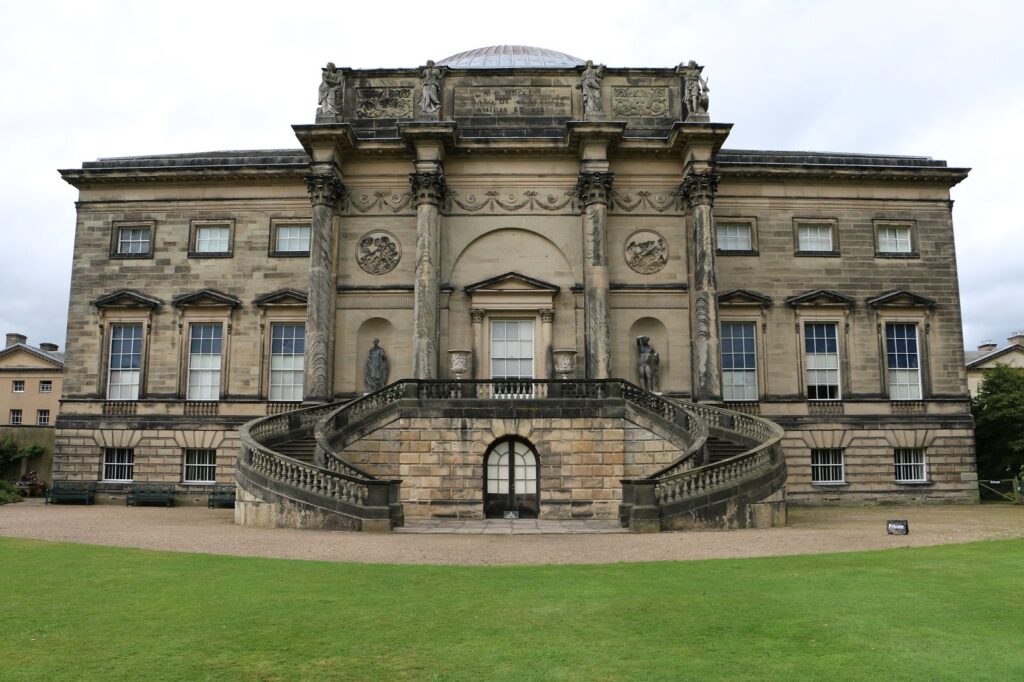
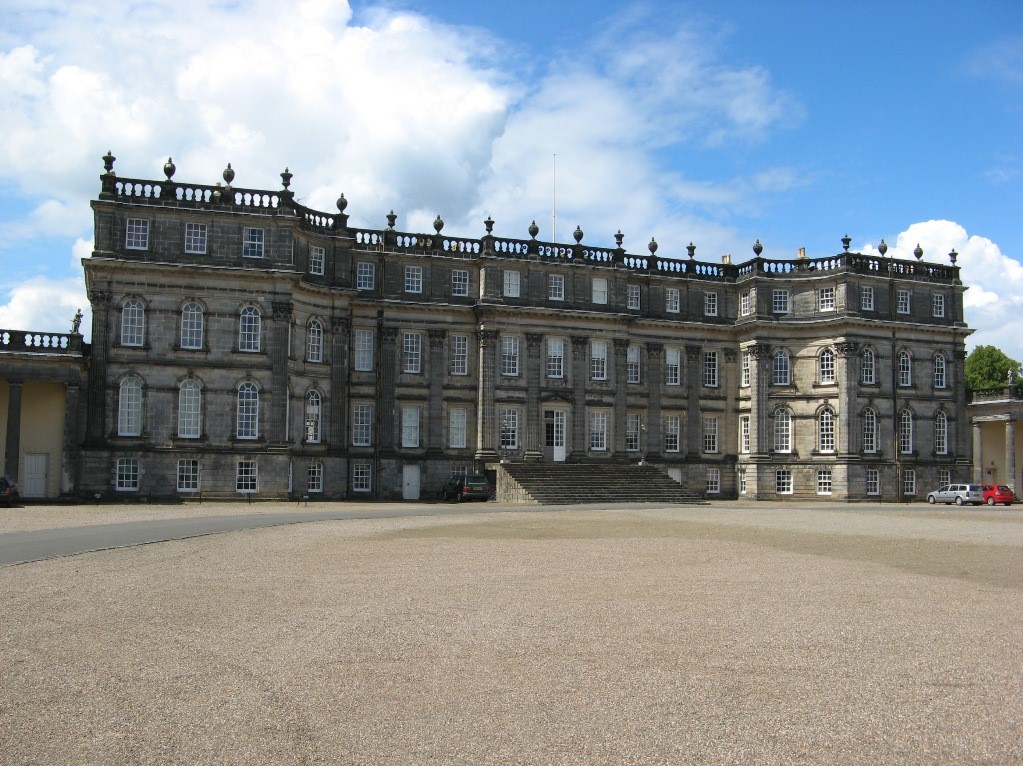
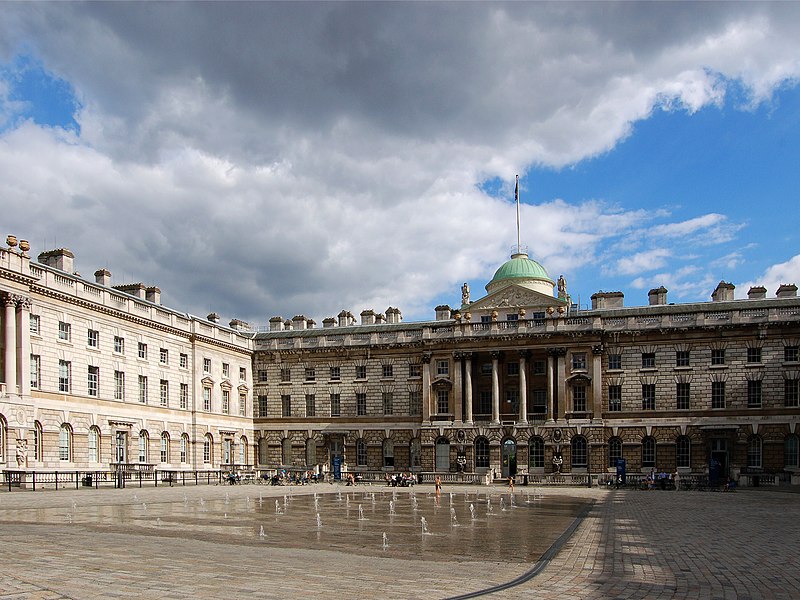
The quintessence of ancient Rome and its “magnificent” architecture once again appeared in the history of architecture in the 18th century. Especially in the teaching of the “postmodern” period, many cases in the history of ancient architecture will appear in the works of postmodern architects for many times, such as Isozaki’s “Plaza Tsukuba” and Michelangelo’s “Plaza Cabido”; the “Keystone” used repeatedly by postmodern architect Graves, in the connection and mutual comparison of this knowledge point, students can not only review the knowledge points of ancient architectural history, but also It can enhance the interest in learning history of architecture.
4. The simultaneous acquisition of history and theory information
Traditional architectural history teaching accentuates the linear development of architecture, and there is also a clear clue in the history of modern architecture. “The evolution of modernism has achieved the greatest development and reached its peak in the hands of the four masters of architecture. The resulting pluralism of thought in the 1960s and 1970s epitomized the results of the modern movement, and this alternative form of discourse is expressed in many reference books on architectural history. This view of linear development comes from Nikolaus Bernhard Leon Pevsner, and many textbooks and reference books have adopted this linear development of architectural history. Sigrid Giedion and Henry-Russell Hitchcock shared the same views as Pevsner, but this linear approach to history was challenged in many ways after World War II. More and more theorists begin to view the development of modern architecture in a broader context, starting from sociology, political economy, humanistic progress, etc., showing a different and diversified theoretical form. Among them, including Bruno Zevi; “The history of architecture takes on a different meaning, it is oriented and defined beyond the chronological links, visions and particularistic judgments that have generally led it towards evolutionary positivism contrary to a serious critical study. need to go beyond the periods of the chronological development of the historical event and the purely geographical boundaries,… “.[5] As well as Manfredo Tafuri, Leonardo Benevolo, American Colin Rowe, etc. [6] Several theorists whose research has made a significant contribution to the formation and development of the diversity of architectural historiography. The explanation of architectural history is not only limited to the understanding of knowledge points, the description of architectural phenomena, the comparison of architectural schools, etc., but should learn more about and study various architectural history methodologies, and interpret architectural history in multiple ways, which requires teachers in Necessary scholars are explained in class and students are recommended to read relevant works after class. Such as “The Modern Language of Architecture” by Zevi, “Theories and History of Architecture” and “Modern Architecture” by Tafuri, The History of Modern Architecture by Benevolo, etc., looks at and criticize modern architecture from multiple perspectives, and establish a critical architectural view.
5. In-depth study of the cases of architectural works
Ludwig Mies van der Rohe is an important representative of modern architecture. In the teaching of modern architectural history in foreign countries, Mies and his works must be explained. The important position of the Barcelona Pavilion in the development of modern architecture lies in its use of free planes, flowing spaces and horizontal and vertical panel elements, without understanding the real structure of the building, including the hidden panels in the panel walls. With light steel support, it is impossible to understand how Mies created the fluidity and infinity of space, and how to create the possibility of dialogue between the wall and the column in the separation of each other. In other words, only by combining the architectural form with the structural form, can students better understand the essence of the Barcelona Pavilion [7]. (Figure 9)
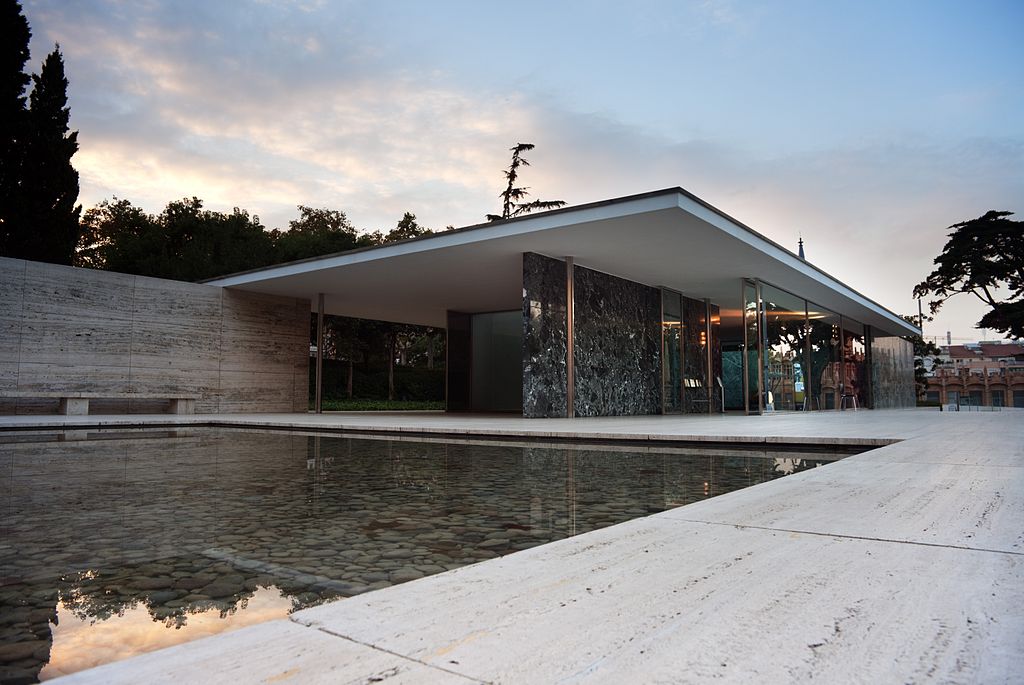
Teaching the history of foreign architecture should not only familiarize students with the results achieved by certain works but also focus on the causes behind classic architectural works. It can be seen that the history of foreign architecture should not only be the evolution history of architectural styles. Professor Denis Bilodeau of Université de Montreal once pointed out that strengthening the construction analysis of case works is one of the effective ways to go beyond the teaching of the history of style evolution. The purpose is to prevent students from simply equating architecture with style and form. Explaining the history of architecture well is a process of constant exploration, which requires not only teachers to teach well, but also students’ active cooperation. In order to stimulate students’ interest in learning and expand the content of foreign architectural history, it is necessary to arrange homework. Students are required to read the recommended reference books after class, select their favourite architects and architectural works, analyze the causes of their ideas or works, and present them in the form of drawings. Through the process of collecting and arranging materials, reading documents and completing homework, students give full play to their subjective initiative, consciously put forward their own architectural views, and complete the change from passive acceptance to active learning. Currently, students are more interested in design than in history. For this reason, in the teaching process, on the basis of completing the syllabus, teachers need to strengthen their own learning, reserve more knowledge, and strive to make attempts and explorations in enriching teaching forms and improving teaching content, so as to stimulate students’ learning. Interested in changing the awkward position of history courses in design disciplines.
a facciata sud su Via Roma dell’edificio è scandita da aperture regolari: le uscite di sicurezza ed il portale d’ingresso al foyer del cinema/teatro (Fig. 17), le finestre quadrate degli uffici al piano rialzato delineate da spesse e lineari cornici in marmo, ed il loggiato al piano primo, la cui lunghezza risulta modulata dai pilastri della struttura.
_________________________________________________________________________________________________
References
[1] Asselin Manon, Reflections on the Teaching of Modern Architecture History, Kindle Edition, 1995, pp. 50–53. [2] Sir John Newenham Summerson, National Portrait Gallery. Retrieved 27 June 2019. [3] Chen Ping, Several Problems in the Writing of Architectural History, New Art, 2006, pp. 98–108. [4] Chen Ping, Art History and Architecture History, Dushu, 2010, pp. 157–161. [5] Bruno Zevi, History of modern architecture, Giulio Einaudi Editore, Turin 2004, pp. 352-355. [6] Wang Shouzhi Criticism of Linear Research in Modern Architecture History, Journal of Fine Arts, 2009, pp. 62–65.[7] Valery Démis, The relationship between the construction analysis of case works and the teaching of Western construction history from the Barcelona Pavilion of Mies, Université de Montréal, 2008, pp. 50–54.
Current address:
Maurizio Abeti, Phd_MSc Professor in charge of History of Architecture (Architecture department – Faculty Architectural Science – at Toronto Metropolitan University already Ryerson University). m.abeti@ryerson.ca
Meryl Kahn, Phd Professor in Heritage Conservation Theory and historic (Architecture department – Faculty Architectural Science – at Toronto Metropolitan University already Ryerson University). m.Kahn@ryerson.ca


